OLD BOND STREET
During the 18th century, the street began to become popular for the bourgeoisie living around Mayfair. Shop owners let out the upstairs for residential purposes, attracting lodgers such as Jonathan Swift, George Selwyn, William Pitt the Elder and Laurence Stern.
In 1784, Georgiana Cavendish, Duchess of Devonshire, an active socialite, demanded that people boycotted Covent Garden as its residents had voted against Whig Member of Parliament Charles James Fox, causing him to lose his seat in parliament and dissolve the Fox–North Coalition. She insisted people should look for nearer shopping streets, and encouraged people to go to Bond Street. Consequently, the street became a retail area for people living in Mayfair. By the end of the century, an upper class social group known as the Bond Street Loungers had appeared, wearing expensive wigs and parading up and down the street in a pretentious manner.
Lord Nelson stayed at temporary lodgings on New Bond Street between 1797–8, and again in 1811–13.Thomas Pitt, 2nd Baron Camelford lived on Bond Street but was unhappy about the presence of the Bond Street Loungers. Already notorious for a violent and abusive temper, on 7 October 1801, he refused invitations to join in celebrations of peace between Britain and France (which led to the Treaty of Amiens), resulting in an altercation with several Loungers at his doorstep. Camelford retreated upstairs and fired upon the crowd with a pistol.
During the 19th century, Bond Street became less known for its social atmosphere and increased its reputation as a street for luxury shopping. The auctioneer Phillips was established in 1796 at No. 101 Bond Street, specialising in stringed instruments and sheet music. The jewellers Asprey originally opened in 1830 at Nos. 165–169 New Bond Street. The Jewish practice of Kabbalah has been associated with the street after former East End trader Sarah Levenson opened a shop on No. 50 New Bond Street in 1856 and immediately became profitable, albeit through exaggerated and questionable product claims. Levenson was twice taken to court and prosecuted for fraud, each resulting in a five-year prison sentence. She died mid-way through the second. Nevertheless, the practice regained popularity and a Kabbalah Centre remains on the street.
The Royal Arcade links Old Bond Street with Albemarle Street. It was originally proposed in 1864 as a longer link between Old Bond Street and Regent Street, but was rejected due to the scale of proposed demolition and restricting access to existing properties. It was subsequently redesigned to its current layout, opening in 1879 and replacing the Clarendon Hotel, which had been demolished in 1870.
The street has continued to hold its reputation for luxury shopping into the 21st century, and has on occasions been regarded as the best retail location in Europe. In 2011, Bloomberg Business reported that New Bond Street was the most expensive retail street in Europe after the Champs-Élysées in Paris.
At one time, Bond Street was best known for top-end art dealers and antique shops that were clustered around the London office of Sotheby’s auction house – which has been at Nos. 34–35 Bond Street since 1917 – and the Fine Art Society, founded in 1876. The sculpture over the entrance to Sotheby’s is from Ancient Egypt and is believed to date from circa 1600BC. It is the oldest outdoor sculpture in London.
The street features “Allies”, a statue of Winston Churchill and Franklin D. Roosevelt, who are portrayed sitting on a park bench in conversation, sculpted by Lawrence Holofcener. The statue, which is very popular with tourists, was unveiled in May 1995 by Princess Margaret and was erected by the Bond Street Association to commemorate 50 years since the end of World War II. In 2013, maquettes of the sculpture (which are replicas, since Holofcener did not make any as part of the original artwork or design) were sold at Bonhams.
Bond Street has been mentioned in several works of literature, including Jane Austen’s novel Sense and Sensibility and Virginia Woolf’s 1925 novel Mrs Dalloway. The plot of the 1948 film Bond Street centres on items purchased from shops on the street. In Suzanna Clarke’s novel Jonathan Strange & Mr. Norrell, Bond Street is described as having “the most fashionable shops in all the kingdom”.
Bond Street is also a square on the British Monopoly board, and is the most expensive of the green-coloured set that also includes Regent and Oxford Streets. The three streets are grouped together because of their shared history in shopping and retail.

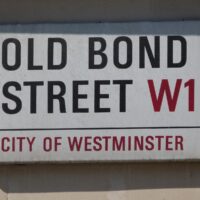
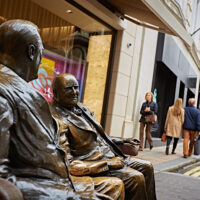
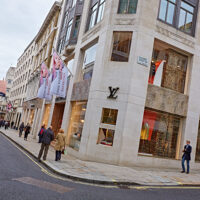
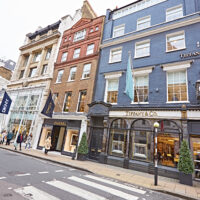
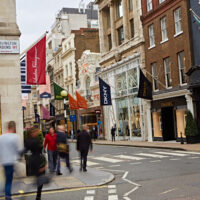
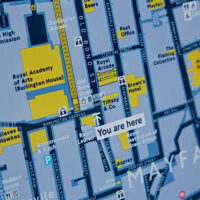
OPEN TODAY
09:00 - 18:00